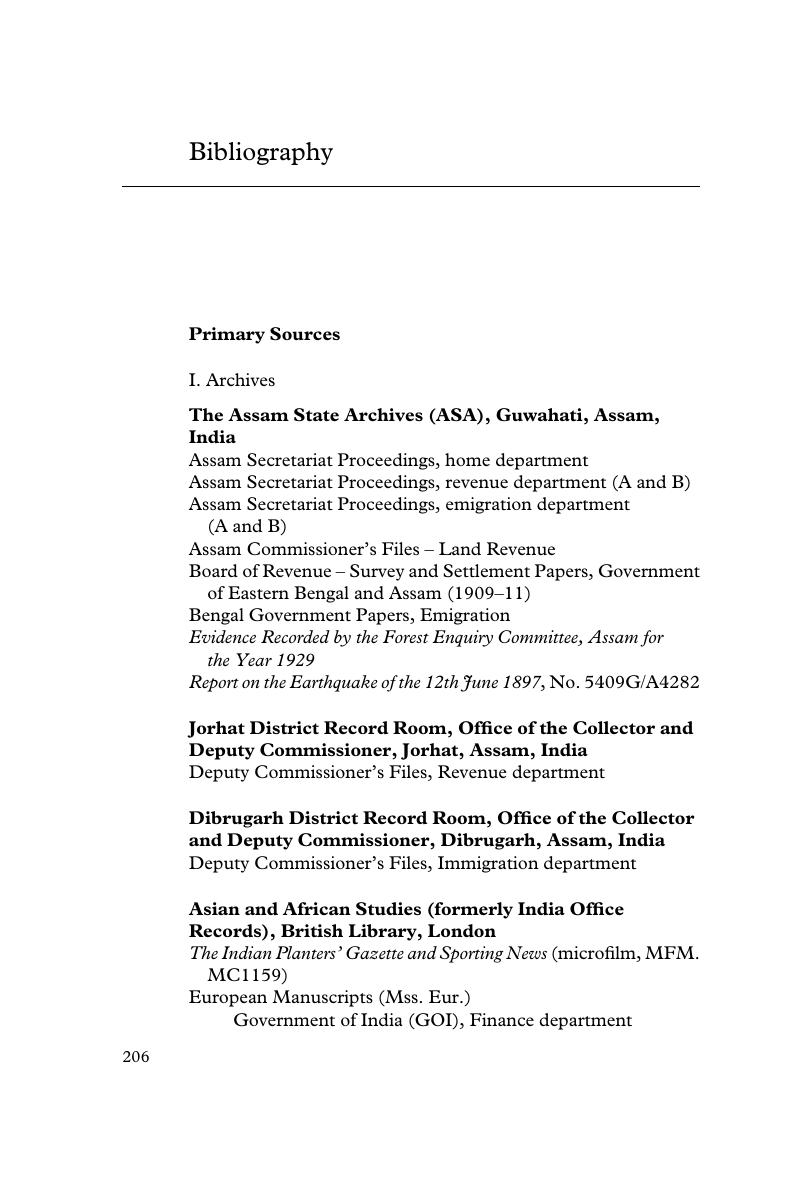Book contents
- Tea Environments and Plantation Culture
- Tea Environments and Plantation Culture
- Copyright page
- Dedication
- Epigraph
- Contents
- Figures
- Maps
- Tables
- Acknowledgments
- Note on Orthography
- Introduction
- 1 Planting Empires
- 2 Agriculture or Manufacture?
- 3 Bugs in the Garden
- 4 Death in the Fields
- 5 Conservation or Commerce?
- 6 Plant and Politics
- Conclusion
- Bibliography
- Index
- References
Bibliography
Published online by Cambridge University Press: 03 December 2018
- Tea Environments and Plantation Culture
- Tea Environments and Plantation Culture
- Copyright page
- Dedication
- Epigraph
- Contents
- Figures
- Maps
- Tables
- Acknowledgments
- Note on Orthography
- Introduction
- 1 Planting Empires
- 2 Agriculture or Manufacture?
- 3 Bugs in the Garden
- 4 Death in the Fields
- 5 Conservation or Commerce?
- 6 Plant and Politics
- Conclusion
- Bibliography
- Index
- References
Summary

- Type
- Chapter
- Information
- Tea Environments and Plantation CultureImperial Disarray in Eastern India, pp. 206 - 223Publisher: Cambridge University PressPrint publication year: 2018



